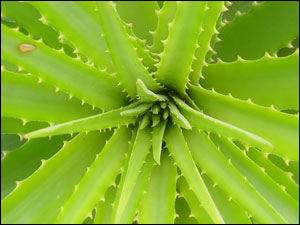Dyckia

Dyckia encholirioides. Photo by Marcia Stefani.
Characteristics
Many dyckia cultivars have striking bronze, purple, or silver foliage that makes them especially attractive in contemporary garden designs. They can be planted en masse as a groundcover, or used individually to add an interesting element in a container garden.
In the spring, the plants produce flower stalks that have dozens of small but showy flowers that are usually a vivid yellow or orange. The flower stalks can reach up to five feet tall, depending on the cultivar.
Dyckia will naturally form a clump over time, as each plant produces young pups around it. Because of this growth habit, dyckia can be used as a groundcover.
Dyckia is also one of the most cold hardy types of bromeliads, which makes it an especially good choice for gardeners in North Florida who have an interest in growing bromeliads outdoors. If frost or a freeze is predicted, it’s still a good idea to cover the plants with a frost blanket or other fabric cover to help protect them.
And unlike some bromeliads that die after flowering, dyckia plants will continue to grow and bloom in subsequent years.
Planting and Care
Dyckia plants prefer a sunny spot with well-drained soil. They can be planted directly in the soil or grown in containers. However, they do have large root masses and will benefit from a slightly oversized pot.
When planting dyckia, it’s a good idea to wear leather gloves and a long sleeved shirt, since the barbs along the leaves are quite sharp and can be painful if they pierce skin.
Once established, dyckia plants tend to be low-maintenance landscape plants. They’ll tolerate periods of drought, but will perform better with regular watering and fertilizing.
For more information on dyckia, contact your county Extension office.
Want to Learn More?
Read our feature article on bromeliads.

